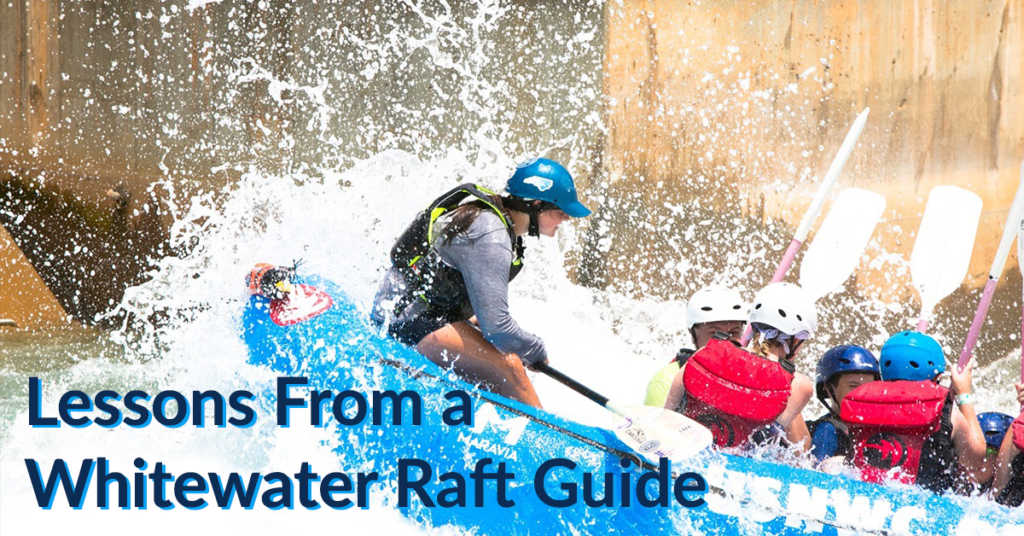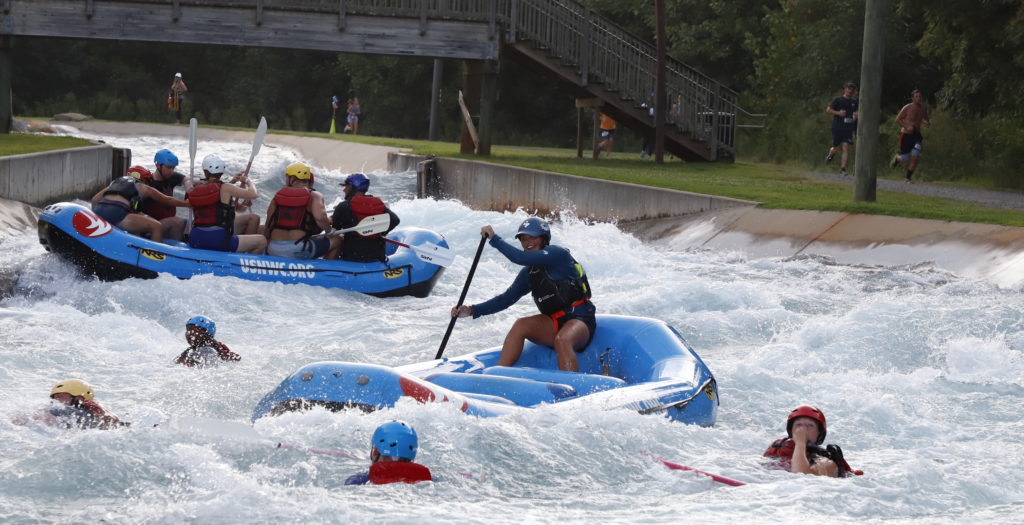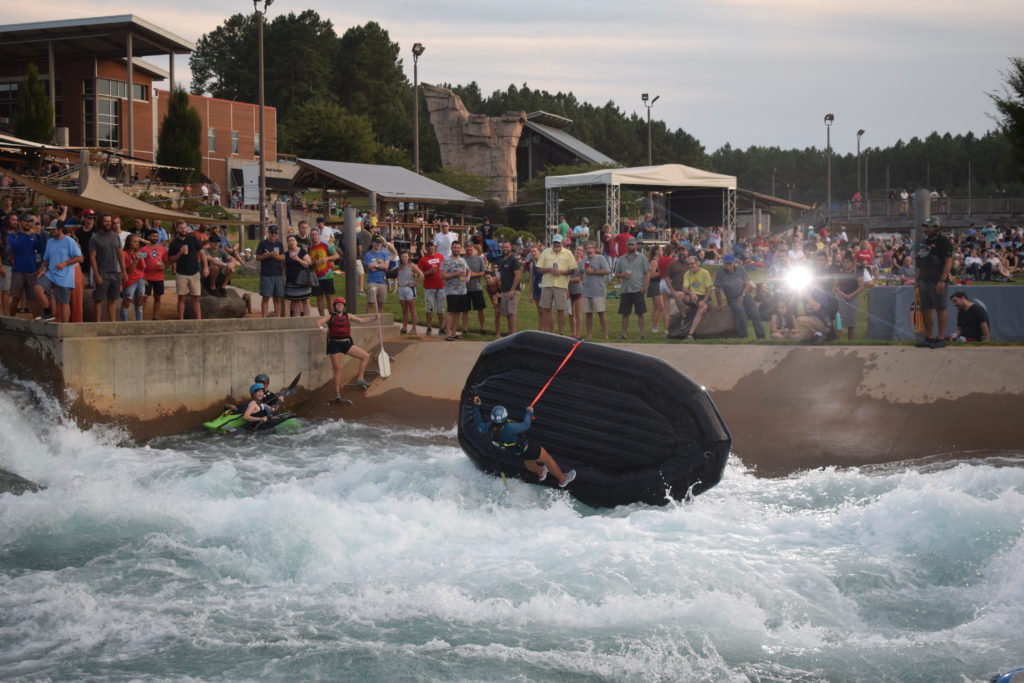Lessons From a Whitewater Raft Guide

Whitewater rafting training was the hardest thing I have ever put myself through mentally and physically. As exhausting and draining as it was, it was equally thrilling and rewarding. I learned so many things about myself and life; I also learned less valuable things like a plethora of dad jokes. “Why did the golfer have two pairs of pants? Because he got a hole in one.” I could go on, but I’ll spare you. Here are the top 6 lessons that were further solidified during my time as a whitewater raft guide:
Number One: It’s All About Your Attitude
There is one particular moment that I consistently try to remind myself of to put things in perspective. The place where I guided had an extensive summer camp program with campers right at that annoying stage where they questioned everything and could care less about listening. They were just a little too fearless, and a swim sounded pretty appealing in the heat of summer. If only they knew how dangerous class 3 and 4 rapids are. As you can imagine, I dreaded when I was paired with camp kids. One day my supervisor came up to me and said, “Lia, are you going to let some 11-year-olds ruin your day?” Of course, he was being slightly dramatic, but it really resonated with me. After that conversation, I had a whole new outlook on my attitude towards those trips and enjoyed them. A group of girls came to multiple weeks of camp and always requested to have me. I imagine my supervisor was pleasantly surprised when he walked by, and we were singing “Let It Go” or “Baby Shark” as we dropped into the channel. Don’t get me wrong, there were still a few campers that tested my patience, but shifting my mindset completely changed how the trips went because they matched my attitude.

Number Two: Customer Service
The customer is not always right in the rafting world, but that doesn’t mean that you can treat them that way. For safety reasons, sometimes you had to take control of a situation that the customer often caused. Sometimes this was definitely harder than others, especially since alcohol was sold on the premises (alcohol and extremely dangerous activities; what could go wrong?) There was a false sense of confidence among guests at this particular whitewater facility as well since it was an artificial river. I would always say, “concrete is far less forgiving than dirt.” I would argue that educating people on rafting best practices to have safe and fun trips was more important than guiding.
Number Three: Be Careful Who You Celebrate Around
The picture below was taken at an event where we do our most extreme rafting. This was my first run down the channel, and one of my fellow guides (pictured in the other boat) dared me to do a trick called the “screaming turtle” down this particular rapid. A screaming turtle entails having one side of the boat paddle forward and the other paddle backward (the screaming is optional but encouraged), causing the raft to spin down the rapid. This part of the channel was a known problem or flip spot when you did not have a good line. We hit the rapid just slightly at an angle, and the rapid caused the boat to almost flip. I stayed in, but the rest of my boat was less fortunate. With a nickname like Guppy, it was a big deal that I stayed in. Well, my supervisor did not love the fact that I was smiling ear to ear while my boat was in the water, and there was a large crowd watching. This lesson has transformed to mean two things to me now: it is all about appearances, and you have to know who is on your side. Even if you meant one thing, you could not control how people perceive you or your actions, so you have to be careful. I did end up getting praised for putting on a good show from another supervisor, but I had to promise not to do any more screaming turtles. It is also important to know when you can celebrate and who it is safe to do it around. Not everyone is cheering for you when you leave the room, so know who those people are; they will not take your successes well.

Number Four: Stay Calm Under Pressure
There was pressure coming from every angle as a raft guide. It is intense, and you have to stay tuned in to your surroundings without forgetting that you have to make the trip entertaining too. My favorite thing to do was go backward, which was arguably easier because I could see what was coming without the guests obstructing my view. However, customers always thought this was wild since they could not see. The best thing was to yell right before the rapid and then smirk when they looked back. If something needed my attention, I would most likely get quiet and focus on what was happening. I learned an important lesson in guide school: never let guests know if you are panicking. This can apply to anything. If you can still maintain the illusion of control, no one reacts out of fear. There is something powerful about confidence; people are more receptive to listening and trusting you.
Number Five: You Are as Strong as Your Weakest Link
We practiced buddy boating on the water, which means you are not going down the channel alone. You have someone with you if you have someone fall out or need assistance. We would go on the water in trips, and depending on how busy it was, we could have three trips on the water at once in 15-minute intervals. It was vital that you stayed with your overarching trip to stay on schedule and help each other. You are only as strong as your weakest link on the trip. If someone slows down or is having trouble in one spot, it messes with the pacing, causing us to be closer together on the channel. You never want to play bumper boats. If a guide flips their boat, it is now your responsibility to get their swimmers because we want to limit their time in the water as much as possible. Having to do this takes time out of the trip, and it changes morale in your boat sometimes. When there are problems, it causes the potential for more things to happen. In these scenarios, it is helpful to be efficient to benefit the team and have conversations to make sure the trips go as smoothly as possible. This applies to everyday teamwork because you benefit from your team succeeding.
Number Six: Don’t Underestimate A Hard-Working Woman
You should never underestimate a hard-working woman. Every trip I guided, at least one person questioned my capabilities. It was not always as blatantly evident as someone asking me if I was really going to be their guide (um, yes?), but it often was in people adding extra paddles or not paddling, questioning my directions. The first lap we did would always be where I had to prove that I was capable to my guests, and then they trusted me the rest of the trip. It was frustrating to know that my male counterparts did not face this, but it was part of the fun that I got to shock everyone on a daily basis. I have had conversations with guys who weigh twice as much as me and are twice as tall that most women are probably better guides in a technical sense. The reason people say that is because women have to be more efficient and calculated with each move to get the same results as a guy that can just muscle through it. The women I knew that were guides were extremely strong mentally and physically. We never let each other get discouraged, and we helped each other get better. We would often stay out in the bottom pond practicing our flip drills (what I am doing in the picture below, although that was not a drill). The long, tiring days taught me what a real work ethic was. It was extremely rewarding.

More About The Author
Lia Esposito is a senior at the University of North Carolina at Chapel Hill pursuing a degree in Media and Journalism concentrating in Advertising and Public Relations with an English Minor. She is currently a social media strategist in the fintech industry.